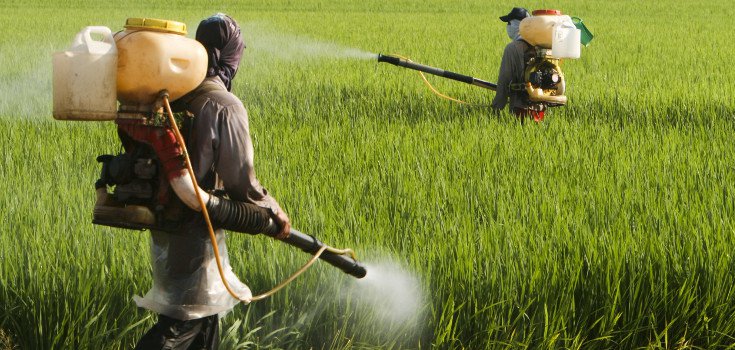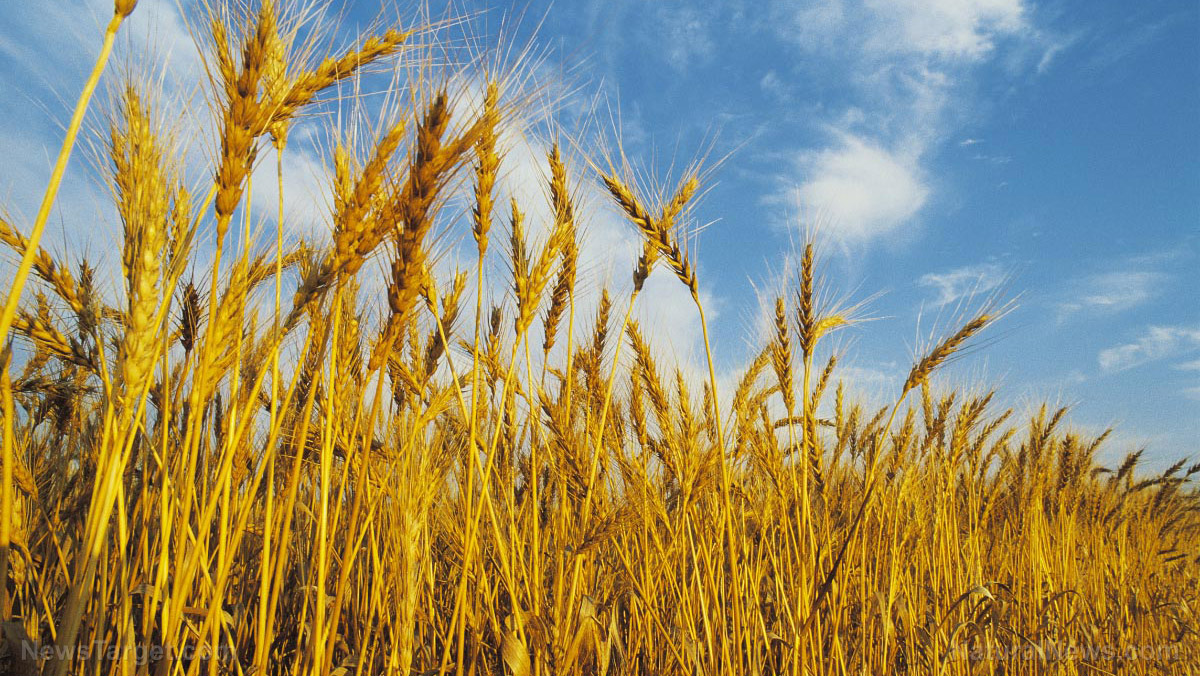Paraquat – toxicity, side effects, diseases and environmental impacts
11/29/2017 / By Janine Acero

Paraquat is a toxic herbicide that has been related to many cases of fatal human poisoning – mainly due to deliberate oral ingestion (for suicide or murder), but also because of accidental ingestion in some cases.
Paraquat is a non-selective contact herbicide, which makes it effective on a wide range of weed plants and even on unrelated weeds. It was once used in the United States and Mexico to kill marijuana plants.
Paraquat binds strongly to soil and its effects are persistent. It is acutely toxic to mammals through all routes of exposure and is also known to affect algae and fish.
Paraquat is a yellow solid with a faint, ammonia-like odor, but is often supplied as a soluble concentrate that is mixed with water and used as a spray. It is used in the production of certain commercial crops such as alfalfa, almonds, grapes, and cotton. It may also be found commercially as a methyl sulfate salt.
Some common trade names for paraquat include Crisquat, Dextrone, Herba-xone, and Spot Killer.

List of known side effects
Paraquat is a highly toxic substance that can cause the following side effects:
- Sensory irritation such as in the eyes, skin, and nose
- Irritation, burning and distress in the mouth, throat, respiratory and gastrointestinal tract
- Pulmonary fibrosis
- Epistaxis (nosebleeds)
- Dermatitis
- Fingernail damage
- Seizures
- Shock
- Shortness of breath
- Vomiting (with or without blood)
- Heart, liver and kidney damage
- Death
Additionally, paraquat is classified as a possible human carcinogen based on animal studies where doses of the substance produced squamous cell carcinoma, an uncommon tumor, in the head region in both sexes of rat models. In the U.S., people must obtain a license to use paraquat. It is classified as “restricted commercial use.”
Paraquat may be corrosive to metals and is very toxic to aquatic organisms, with long-term effects.
Body systems affected by paraquat
Paraquat is exceedingly toxic to humans. It is labeled with a “DANGER-POISON” signal word. Paraquat poisoning can cause severe damage to various parts of the body, including the eyes, skin, respiratory system, heart, liver, kidneys, and gastrointestinal tract. Severe doses can cause death by respiratory or renal failure.
Items that can contain paraquat
Paraquat is mainly used to control broad-leaved weeds like cocksfoot, and grasses including wild oats, Yorkshire fog grass, ryegrass, and fescue. It is applied to vineyards and crops such as rice, beans, peas, and potatoes.
The Pesticide Properties DataBase lists manufacturers and suppliers that used paraquat historically or currently:
- AgriGuard
- Clayton
- Syngenta
Products containing paraquat:
- AgriGuard Paraquat
How to avoid paraquat
Seek immediate medical attention in the case of accidental or suspected ingestion, as paraquat is highly poisonous.
The Centers for Disease Control and Prevention (CDC) lists some important safety measures to protect yourself from paraquat poisoning:
- Remove contaminated clothing – take off any clothing item that has been contaminated with liquid paraquat to avoid contact with skin. Avoid the contaminated part of the clothing if you are helping someone else remove their clothing.
- Wash the contaminated area – wash off any paraquat residue from your skin with large amounts of soap and water. In case of contact with eyes, flush them with running water for 10 to 15 minutes. Remove contact lenses if applicable.
- Discard contaminated clothing – wear rubber gloves or use tools to place the contaminated clothing in a plastic bag, avoiding any paraquat residue as much as possible. Call your local health department or emergency personnel to arrange total disposal of the contaminated items.
Where to learn more
- GMO soy bringing poverty, poor health to South America
- The pesticide atrocity of Nicaragua: Nemagon survivors seek justice after being poisoned
- Farmers at higher risk of developing various cancers caused by pesticide exposure
- Hawaiians assaulted with harmful chemicals as state regulators refuse to enforce federal pesticide laws
- Pesticide linked to Parkinson’s disease being sold in US, already banned in Europe
Summary
Paraquat is an herbicide that has been the cause of several hundred cases of fatal human poisoning.
Paraquat was once used in the U.S. and Mexico to kill marijuana plants.
In the U.S., people must obtain a license to use paraquat.
Sources include:
Tagged Under: paraquat




















